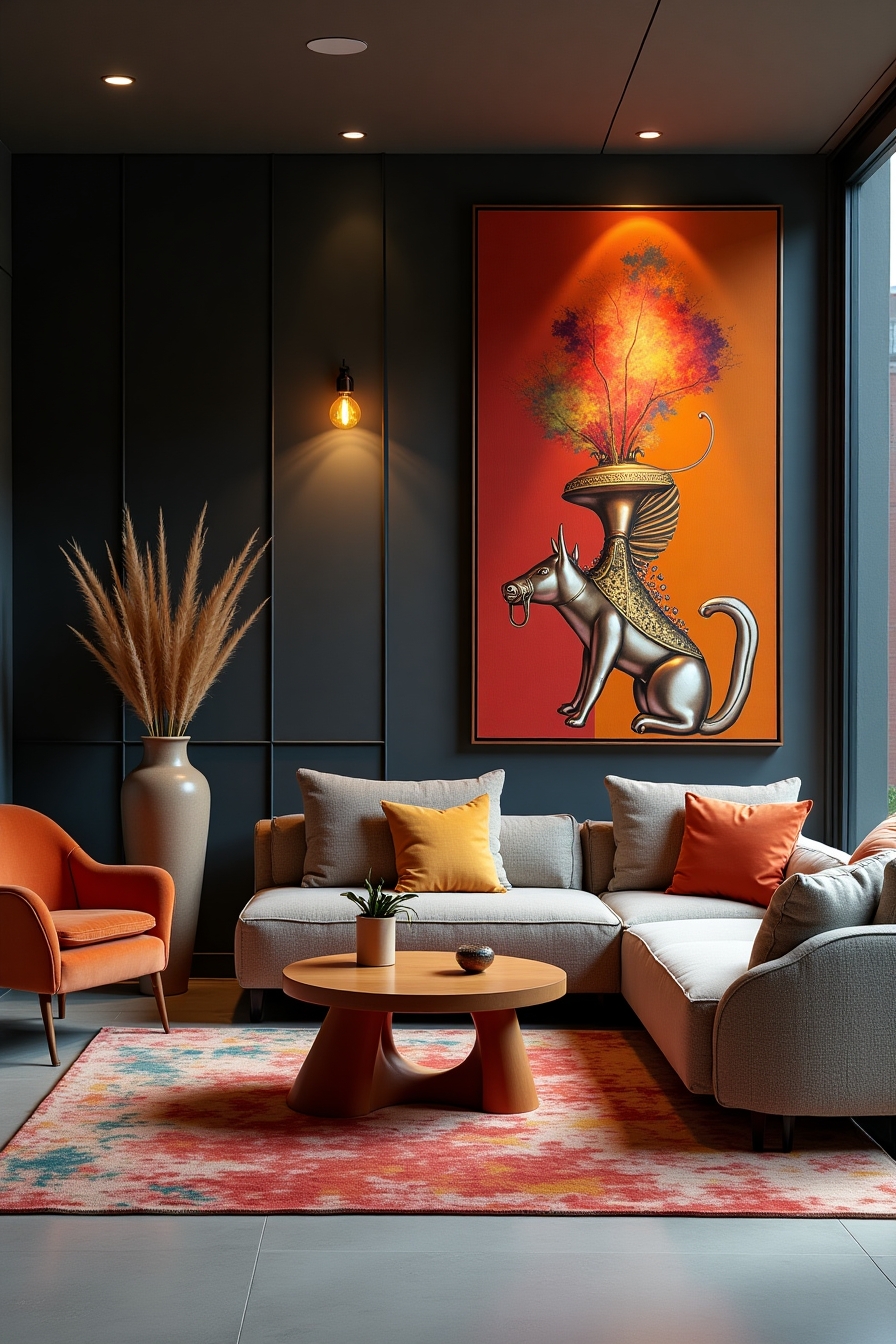Primitive decorating celebrates the beauty of simplicity, handcrafted elements, and a connection to our rural past that feels increasingly precious in today’s high-tech world.
When done right, these rustic touches create spaces that feel authentically lived-in, warmly inviting, and refreshingly genuine.
Let’s explore unique primitive decorating ideas that will help you create a home that tells a story, warms the soul, and stands apart from cookie-cutter design trends.
✨Click to Get My 101 FREE Designer Room Ideas
Handcrafted Wooden Furniture with Character and History


Nothing anchors a primitive-style room quite like a piece of furniture that bears the marks of time and craftsmanship.
Look for wooden pieces with visible joinery, handmade dovetail connections, or evidence of hand planing rather than machine-perfect surfaces.
The patina that develops on well-used wooden surfaces creates a depth and character that no factory finish can replicate.
Consider introducing a farmhouse table with a weathered top that shows years of family gatherings, complete with knife marks, stains, and the beautiful imperfections that tell a story.
Pie safes, jelly cupboards, and dry sinks offer both practical storage and authentic primitive charm that mass-produced furniture simply cannot match.
Don’t shy away from pieces with visible repairs – these “make-do” elements celebrate resourcefulness and sustainability long before they became trendy concepts.
When shopping, explore estate sales, rural auctions, and antique markets rather than mainstream furniture stores to find pieces with genuine age and craftsmanship.
If your budget won’t stretch to antiques, look for contemporary artisans who work with reclaimed materials and traditional joinery methods.
The weight and solidity of handcrafted wooden furniture grounds your space and creates an immediate sense of permanence and history.
Textile Treasures: Handwoven and Heritage Fabrics

Textiles provide the perfect opportunity to introduce warmth, texture, and authentic primitive elements into your home.
Hunt for hand-stitched quilts with traditional patterns to display as wall art or to drape across beds and the backs of sofas.
These textile masterpieces often incorporate fabrics from family clothing, creating literal patchworks of personal history.
Homespun linens, with their slightly irregular weave patterns, bring an authenticity to table settings that mass-produced textiles cannot match.
Consider grain sacks with their distinctive blue or red stripes as pillow covers, table runners, or even upholstery for small accent chairs.
These utilitarian textiles have stood the test of time and bring agricultural heritage into contemporary spaces.
Wool penny rugs, with their folk-art circular designs, add color and craftsmanship to tabletops, mantels, and entry console tables.
Hand-dyed fabrics using natural materials like onion skins, walnut hulls, or indigo create subtle, earthy color variations that synthetic dyes cannot replicate.
Don’t overlook primitive-style samplers and needlework as wall decor – these showcase both artistic skill and historical education practices.
The slight imperfections in hand-stitched items remind us of the human connection behind each piece, something increasingly valuable in our automated world.
Wool braided rugs bring circular patterns and textural interest to wooden floors while providing practical warmth and durability.
Illuminating History: Candlelight and Early Lighting Solutions
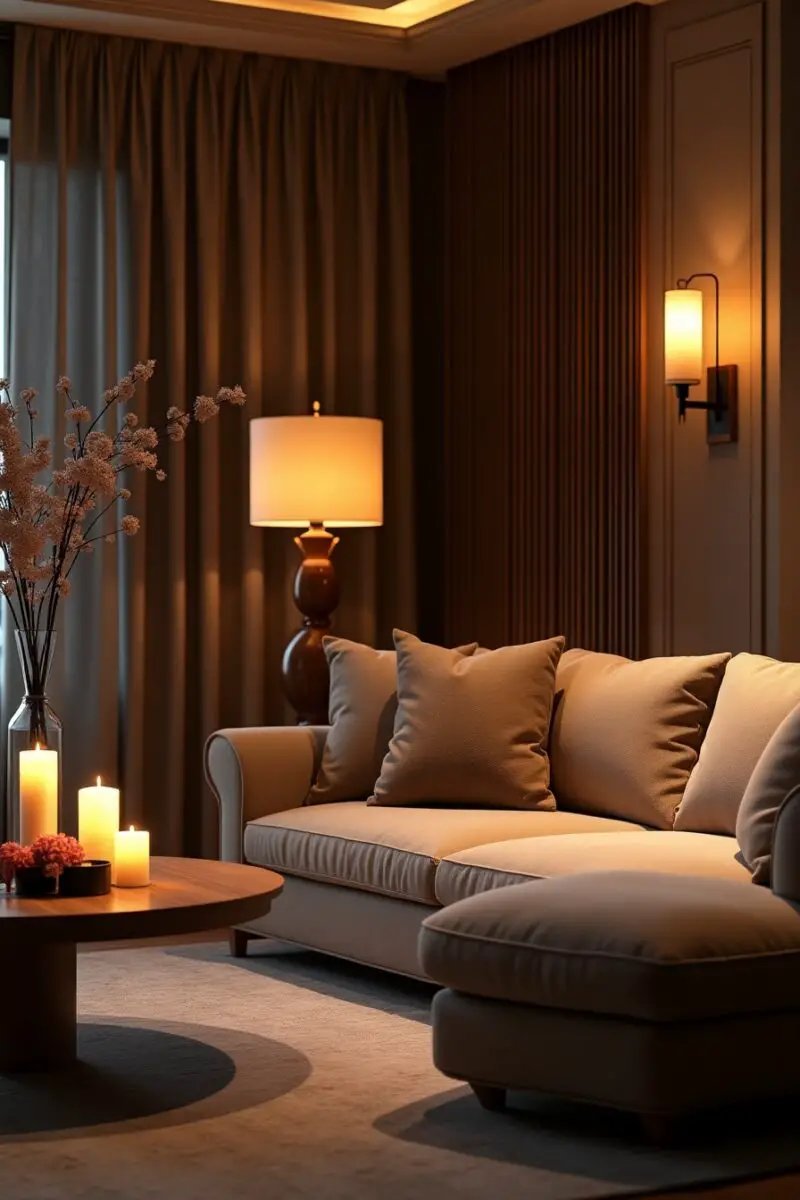
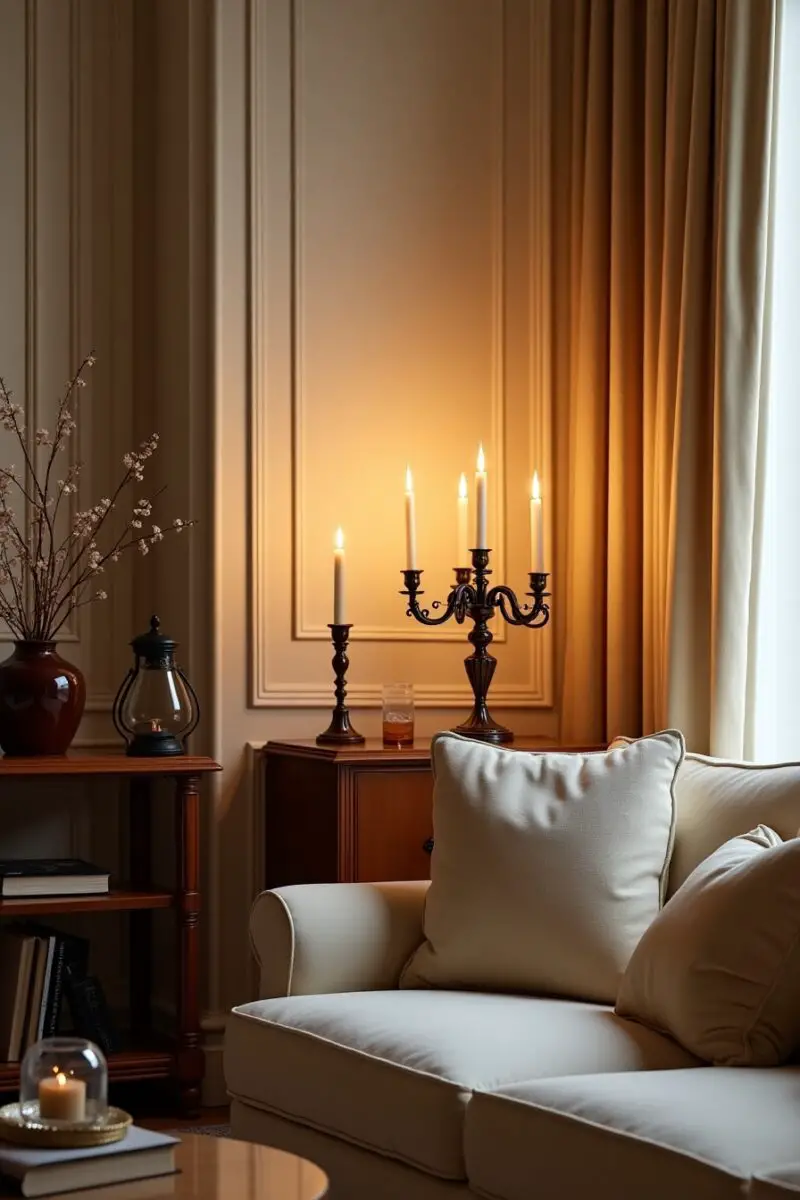
Before electricity transformed homes, people relied on ingenious lighting solutions that now offer atmospheric primitive charm.
Incorporate authentic reproduction or antique candlesticks in various heights, materials, and designs throughout your home.
Tin punched lanterns cast magical shadow patterns on walls and ceilings, creating ambiance no modern lighting fixture can match.
Early Betty lamps, which burned fat or oil with a simple wick, make fascinating display pieces that connect your home to centuries of domestic history.
Consider installing wall sconces with candle cups (electric or real) in hallways and dining areas for authentic period lighting.
Rush lights, with their distinctive holders designed to burn thin strips of dried plant material, make conversation-starting decor elements.
Hanging candle chandeliers above dining tables creates a gathering point that evokes communal meals from simpler times.
Early oil lamps with their hand-blown glass fonts and reflective metal backs tell the story of innovation and domestic technology.
Strategically place these lighting elements near mirrors or reflective surfaces to maximize their gentle glow throughout your space.
The warm, flickering quality of flame-based light sources casts a flattering glow that makes everyone and everything look better.
For safety and convenience, consider using high-quality flameless candles in areas where they’ll remain lit for extended periods.
The subtle shadows and natural light variation these primitive lighting solutions create stands in beautiful contrast to harsh modern lighting systems.
Weathered Wood Wonders: From Barn Board to Beautiful Design


Reclaimed wood brings immediate authenticity, environmental benefits, and visual interest to primitive-inspired homes.
Look beyond polished surfaces to embrace the natural character of weathered wood with its splits, knots, and nail holes.
Barn board accent walls instantly transform ordinary rooms into spaces with depth, history, and visual texture.
Consider incorporating hand-hewn beams across ceilings to add architectural interest and a sense of rustic structure.
Old wooden boxes, crates, and shipping containers become unique storage solutions and display platforms for collections.
Weathered wooden ladders, leaned against walls, provide vertical interest and practical display space for quilts and textiles.
Repurposed shutters, window frames, and doors become wall art, room dividers, or headers above contemporary doorways.
Early wooden tools like butter churns, spinning wheels, and flax brakes bring fascinating functional history into living spaces.
The varying patinas of differently weathered woods create a collected-over-time aesthetic that cannot be replicated with new materials.
Wooden breadboards, dough bowls, and kitchen implements blend function and beauty when displayed rather than hidden away.
The natural gray weathering of old barnwood pairs beautifully with warm metals like copper and brass for a balanced primitive palette.
Even small wooden elements like antique spools, wooden buttons, or clothespins can be gathered in glass containers for tabletop interest.
✨Click to Get My 101 FREE Designer Room Ideas
Forged and Found: Metal Elements with History and Heft
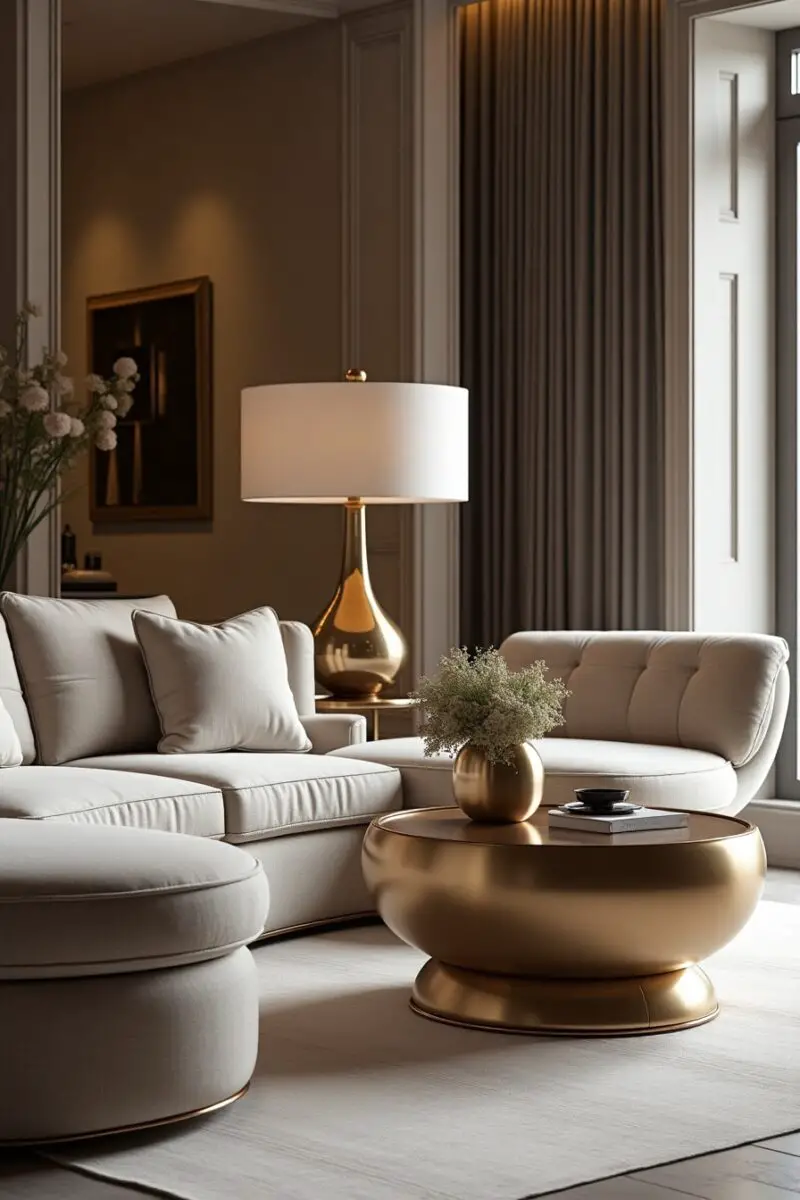

Hand-forged metal pieces bring primitive strength and artisanal character to contemporary spaces.
Early lighting devices like betty lamps, rush light holders, and candle snuffers display the blacksmith’s craft and domestic ingenuity.
Consider wrought iron pot racks suspended above kitchen islands to showcase both the metalwork and your collection of cast iron cookware.
Hand-forged hearth tools beside a fireplace aren’t just decorative – they connect your home to centuries of fireside gatherings.
Look for hand-punched tin panels in pie safes and cupboards where the unique patterns allowed air circulation while keeping pests away.
Antique metal advertising signs with their faded patinas and bygone typography make compelling wall art with historical context.
Copper vessels develop rich patinas over time, telling the story of their use through beautiful color variations from bright penny-orange to deep brown.
Consider installing salvaged tin ceiling tiles as a backsplash, wall accent, or actual ceiling treatment for instant architectural interest.
Early farm implements like hay hooks, livestock tags, and hand tools become sculptural wall art when thoughtfully arranged and mounted.
Old metal bed frames with their curved designs and patinated surfaces make statement pieces in primitive-styled bedrooms.
The weight and solidity of hand-forged metal items provides a grounding counterpoint to softer textile elements in primitive design.
Pottery with Provenance: Stoneware, Redware, and Early Ceramics


Early American pottery brings authentic color, texture, and functional history to primitive decorating schemes.
Salt-glazed stoneware with its distinctive orange-peel texture and cobalt blue decorations makes striking display pieces on open shelving.
The warm terracotta tones of redware pottery connect your decor to the earth itself and centuries of traditional ceramic techniques.
Look for pieces with makers’ marks, distinctive glazing patterns, or regional decoration styles that tell a deeper story of American craft.
Spongeware pottery, with its distinctive stippled decoration, brings charming pattern to primitive kitchen displays.
Yellowware, with its warm golden tones, contrasts beautifully with darker woods and metal elements in primitive displays.
Mocha ware, featuring distinctive tree-like patterns created through chemical reactions in the glaze, showcases early potters’ artistic innovations.
Don’t limit pottery to purely decorative roles – use crocks for utensil storage, jugs as vases, and bowls for everyday serving to integrate history into daily life.
Early ceramic storage vessels often feature capacity marks, makers’ stamps, or regional decorative elements that connect to specific historical traditions.
Display collections by color, function, or maker to create visual impact and tell a more cohesive story through your pottery selections.
Consider the silhouettes of different pottery forms when creating displays – the curved lines of jugs and bottles provide beautiful contrast to rectangular furniture pieces.
The minor imperfections, glaze variations, and evidence of handwork in early pottery pieces adds authentic character impossible to find in mass-produced ceramics.
Nature’s Bounty: Bringing the Outdoors In Through Primitive Elements


Primitive decorating has always embraced natural elements, creating a seamless connection between indoor spaces and the surrounding landscape.
Consider dried herb bundles hanging from ceiling beams not just as decoration but as functional pantry items connecting to traditional preservation methods.
Handwoven baskets made from foraged materials like willow, oak splints, or sweetgrass bring organic texture and practical storage solutions.
Grapevine wreaths, either left natural or adorned with dried flowers, create seasonal focal points that celebrate agricultural cycles.
Corn husk dolls, pine cone decorations, and seed pod arrangements connect your home to traditional folk crafts and natural abundance.
Display collections of bird nests, interesting stones, or shed antlers under glass cloches for curated natural history exhibits within your living spaces.
Hand-carved wooden spoons, bowls, and utensils showcase the beauty of wood grain while connecting to practical domestic traditions.
Consider incorporating a traditional herb drying rack in your kitchen, blending function and primitive aesthetic while celebrating seasonal harvests.
Beeswax candles with their honey scent and warm glow connect your home to traditional crafts while providing natural illumination.
Pressed botanicals in simple frames create wall art that documents your local landscape while referencing historical herbarium collections.
Handmade brooms with their sculptural forms stand as beautiful objects while nodding to essential homemaking tools of earlier eras.
Primitive Color Palette: Historical Hues with Modern Appeal


Early American color schemes relied on natural pigments and dyes, creating a distinctive palette that still resonates in contemporary spaces.
Consider milk paint in shades like Lexington green, Bayberry, or Salem red for furniture pieces that will develop authentic patina over time.
These traditional paint formulations bond differently to wood than modern paints, naturally chipping and wearing in patterns that reveal previous colors beneath.
Indigo-dyed textiles bring deep, complex blues that pair beautifully with the warm tones of aged wood and worn leather.
Madder root reds, ranging from brick to salmon, add warmth to primitive color schemes while referencing traditional natural dyeing techniques.
Butternut and walnut hull browns create subtle, complex neutral backgrounds that showcase more colorful primitive elements.
Ocher yellows, derived from earth pigments, add warmth without the brightness of modern synthetic yellows that would feel out of place in primitive settings.
Consider layering different historical colors through textiles, painted furniture, and accessories rather than creating monochromatic primitive spaces.
The mellowed, complex tones achieved through natural pigments create depth that synthetic colors can’t replicate.
Look to early painted furniture for authentic color combination inspiration – many pieces feature decoration in complementary traditional hues.
Colonial blue, a softer alternative to navy, pairs beautifully with cream, mustard, and barn red in primitive color schemes.
✨Click to Get My 101 FREE Designer Room Ideas
Functional Folk Art: Practical Objects with Artistic Merit
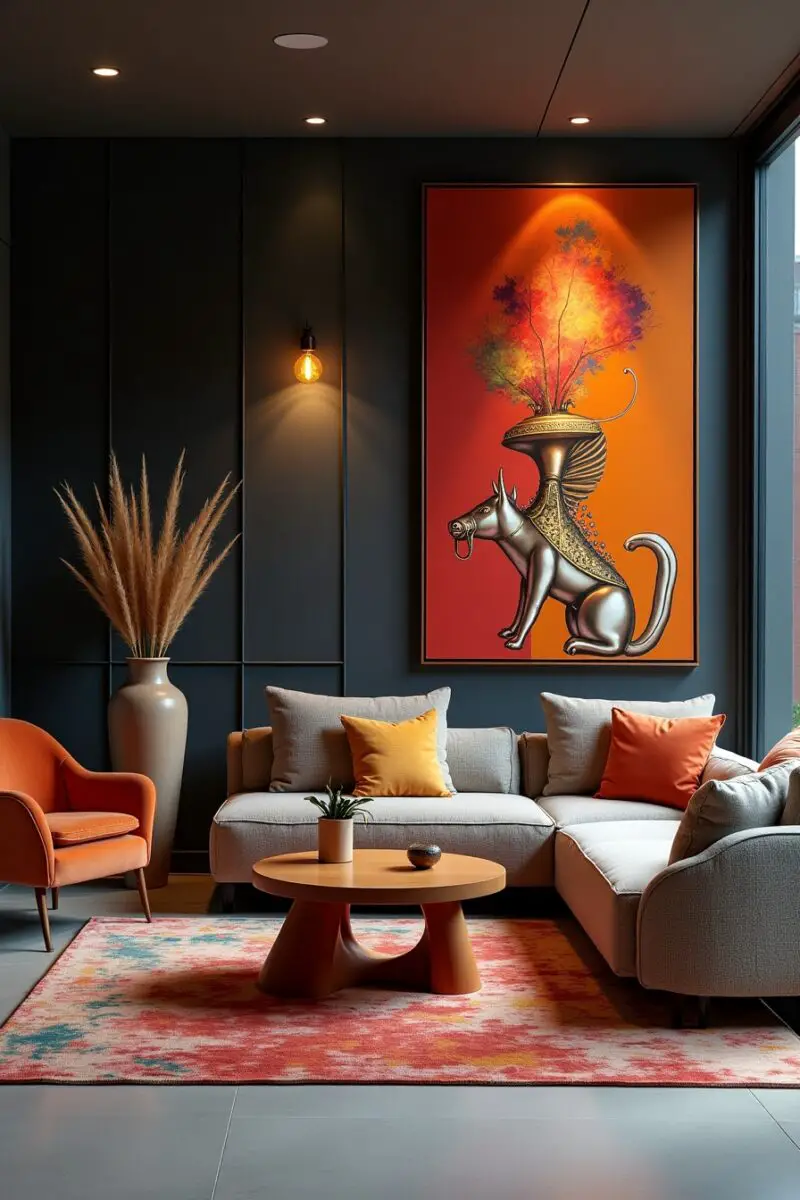

Primitive decorating celebrates objects that blend necessary function with personal artistic expression.
Hand-carved butter molds with their intricate designs tell stories of dairy production and domestic artistry in early American homes.
Consider displaying traditional games like handmade checkerboards, carved dominos, or hand-stitched ball toys as both decorative elements and entertainment options.
Theorem paintings on velvet – simple, stenciled folk art forms – add primitive color and pattern to walls while showcasing traditional techniques.
Weather vanes, removed from barns and mounted as indoor sculptures, bring agricultural heritage and distinctive silhouettes to primitive spaces.
Hand-painted bride boxes and document boxes combine practical storage with decorative finishes that marked important life transitions.
Tramp art frames and boxes, created from notched and layered cigar box wood, showcase incredible geometric patterns created with the simplest tools.
Consider displaying collections of hand-carved cooking molds, from springerle cookie stamps to butter prints, as kitchen wall art.
Fraktur documents – elaborately decorated birth, marriage, and religious certificates – combine calligraphy, folk imagery, and significant life events.
Decoys carved for hunting became increasingly artistic over time, making them compelling display pieces that connect to sporting traditions.
Traditional toys like whirligigs, carved animals, and hand-stitched dolls bring whimsy to primitive decorating while showcasing everyday creativity.
The intersection of necessity and creativity in these functional folk art pieces reminds us that beauty and utility have long been intertwined in American domestic life.
Preserving Traditions: Heritage Skills as Decorative Elements


Beyond objects themselves, primitive decorating celebrates the processes and skills that created domestic comfort before modern conveniences.
Consider creating a dedicated space for traditional fiber arts like spinning, weaving, or quilting that serves as both functional workspace and living display.
Drying racks filled with homegrown herbs or flowers connect your decor to seasonal rhythms and traditional preservation methods.
A dedicated corner for seed saving with labeled heirloom varieties in glass jars combines practical gardening continuity with beautiful display potential.
Hand-dipped candle making stations with simple equipment and beeswax become both functioning craft areas and visual storytelling about historical lighting.
Traditional food preservation displays with crocks for fermenting, copper pots for jam making, and specialized tools showcase domestic technologies.
Consider dedicating wall space to displaying hand tools for traditional crafts like woodworking, leathercraft, or basketry as functional art.
Soap making stations with wooden molds, natural colorants, and essential oils connect to practical homemaking while creating beautiful sensory products.
Natural dyeing setups with indigo vats, mordant pots, and drying lines blend chemistry, textile arts, and historical color production.
Traditional brewing or distilling equipment, whether functional or display pieces, connects to important historical food preservation techniques.
A designated area for letter writing with handmade papers, quills, and sealing wax celebrates communication traditions while creating a mindful pause in busy lives.
By incorporating not just primitive objects but the processes that created them, your home becomes a living connection to traditional knowledge and skills.
Primitive decorating isn’t about perfectly recreating historical spaces, but rather about incorporating elements that speak to a simpler, more handcrafted approach to home.
Each item you choose should resonate with your personal connection to history, craftsmanship, and the authentic stories that make a house truly feel like home.
As you integrate these primitive elements, you’ll find your spaces taking on a depth and character that mass-produced decor simply cannot provide – a home that feels genuinely yours, built on traditions that have stood the test of time.

